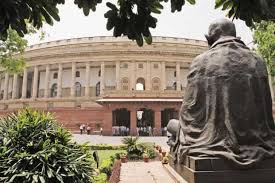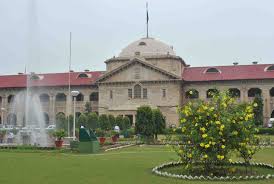Conflicts with Environment Disturbing the Health and Ecosystem.
Historical & Literary Perspective of Humanity during Pandemics
Over the millennia, epidemics have been mass killers on a scale we can’t imagine today, even in the time of corona virus. For e.g., mosquito-borne disease malaria has stalked humanity for thousands of years, and even now nearly half a million people are victims every year. The plague of Justinian struck in the 6th Century and killed perhaps half the global population at that time. The Black Death of the 14th Century may have killed up to 200 million people. Smallpox may have caused the death of as many as 300 million people in the 20th century alone.
In the spring of 1918, as the embers of the man-made horrors of World War-I were finally starting to die down, Mother Nature released the deadliest strain of influenza in modern history. The virus infected 40 percent of the global population over the course of the next 18 months. Out of this 40 percent, an estimated 20 to 50 million people perished, in stark contradistinction where more than roughly 17 million people killed during the First World War. The pandemic’s grasp stretched all the way from United States of America and Europe to the remotest reaches of Greenland and the Pacific islands. Its victims, among others, included the likes of President Woodrow Wilson, who contracted the virus while negotiating the Treaty of Versailles in early 1919.

As the pandemic reached epic proportions in the fall of 1918, it came to be commonly called as the “Spanish Flu” or the “Spanish Lady” in the United States of America and Europe. Many assumed that the cause of the sickness had originated on the Iberian Peninsula, but the nickname was actually the result of a widespread misunderstanding. Spain was one of the few major European countries to remain neutral during World War-I. Unlike in the Allied and Central Powers nations, where wartime censors suppressed the news regarding the flu to avoid affecting morale, the Spanish media was free to report on the news regarding the flu. News of the sickness was first reported in Madrid in late May of 1918, and the coverage regarding the Flu only increased after the Spanish King Alfonso-XIII came down with a nasty case a week later. Since the Nations which were undergoing a media blackout could only read the accounts of the flu from the Spanish news sources, they naturally assumed that Spain was the pandemic’s ground zero. The Spanish, meanwhile, believed the virus had spread to them from France, so they took to calling it the “French Flu”. One lesson we should learn from history is that there is huge international politics and blame game in the naming of any virus, which can be seen in the current context as well with the Covid-19 virus being also referred to as the “Chinese virus” by certain political figures.
हिंदी में पढ़ने के लिए : https://mediaswaraj.com/covid19_historical_and_literary_perspective_sanjayr_bhoosreddy/
America’s Forgotten Pandemic
The historian Alfred Crosby was the author of America’s Forgotten Pandemic, one of the great books pertaining to the 1918 flu. This flu with different strains had resurgence as Hong Kong flu decades later in 1968 and again as bird flu in 1996, which is still having repercussions globally and in India too. Some interesting literary works worth mentioning are that of Katherine Anne Porter who survived her illness during 1918 flu and later recorded her experience into her powerful novella Pale Horse, Pale Rider. The story is directly about the pandemic that killed more people in the United States than the country lost in all the twentieth and twenty-first-century wars, combined. “The Waste Land” a poem by T.S. Eliot, is considered to be one of the most important poems of the 20th century. He along with his wife caught the flu during the pandemic. His pain poured out in his poem and among its famous phrase is “April is the cruellest month”. Similarly, W.B. Yeats also captures the sense of post-World War-I menace in “The Second Coming”, a poem composed in the weeks after he watched his pregnant wife come close to death in the pandemic. William Maxwell’s novel “They Came Like Swallows”, recalls his own pregnant mother’s death in the influenza pandemic.
Plague God’s punishment for sin ?
In the ancient world, plague and pestilence were rather frequent calamities, which were followed by accounts of scary reports as witnessed or heard by ordinary people. When the plague spread, no medicine could help, and no one could stop it from striking; the only means of escaping the plague was to avoid contact with infected persons and contaminated objects. There are various references in the Bible (e.g., Exodus 9:14, Numbers 11:33, 1 Samuel 4:8, Psalms 89:23, Isaiah 9:13). The plague was viewed as one of God’s punishment for sins. This causal relationship shared between plague and sin is seen also in Greek literary texts, such as Homer’s Iliad and Sophocles’ Oedipus the King (429 BCE).
In contrast, the Greek historian Thucydides (c.460–395 BCE), in his History of the Peloponnesian War, and the Latin poet Lucretius (c.99–55 BCE), in his De Rerum Natura, refuted a supernatural origin of the disease. According to these authors, the plague did not discriminate between the good and the evil.
Later medieval writings, such as The Decameron by Giovanni Boccaccio (1313–1375) and The Canterbury Tales by Geoffrey Chaucer (1343–1400), emphasized human behavior and cites that increased vices such as avarice, greed and corruption, led to infection and thus to both moral and physical death. A Journal of the Plague Year by Daniel Defoe (1659–1731) is a long, detailed narrative of events, anecdotes, and statistics regarding the Great Plague of London of 1665. In a similar manner, The Betrothed and History of the Column of Infamy, both written by the Italian novelist Alessandro Manzoni (1785–1873), were extraordinary descriptions of the plague that struck Milan around 1630.
Good Reads
The Last Man (1826) by English novelist Mary Shelley (1797–1851) was one of the first apocalyptic novels, telling of a future world that had been ravaged by a plague and gives the concept of immunization. In 1842, the American poet and novelist Edgar Allan Poe (1809–1849) published “The Masque of the Red Death”, a short story highlighting that the issue is not that people die from the plague, but that people are plagued by death. There are many more examples of masterpieces coming out of various authors’ experiences like the Scarlet Plague, published in 1912, was one of the first examples of a post-apocalyptic fiction novel in modern literature. This novel differed greatly from earlier writings related to plague because it reflected deeply the contemporary scientific discoveries on pathogens fostered by scientists such as Louis Pasteur (1822–1895) and Robert Koch (1843–1910).
Some good reads that I would recommend are Earth Abides by George R. Stewart in 1949, I Am Legend by Richard Matheson in 1954, The Stand by Stephen King in 1978, Love in the Time of Cholera by Colombian Nobel prize winning author Gabriel García Márquez in 1985 and Guns, Germs, and Steel : The Fates of Human Societies book by Pulitzer and the Aventis Prize winner Jared Diamond in 1997.
Similarly, I would also recommend, to enjoy and learn from, modern blockbuster movies such as 12 Monkeys (1995), 28 Days Later (2002), Carriers (2009), and Contagion (2011).
All these events, point strongly towards an imbalance in nature, largely man-made and creating conflicts with environment, animals and humans, disturbing the health and ecosystem.
All these events, point strongly towards an imbalance in nature, largely man-made and creating conflicts with environment, animals and humans, disturbing the health and ecosystem.
Sharing of history and literature is important because it keeps the account of the trials and tribulations of the difficult times of pestilence and pandemics but also shows the influence that it has in changing the belief and understanding of the masses over time of the pests, bacteria and viruses from the traditional beliefs to scientific understanding, which is essential for better handling of pandemics by the entire citizenry thereby reducing the burden on the governments and ultimately on the public exchequer.
(Sanjay Bhoosreddy is presently posted as Principal Secretary, Sugar Industry & Cane Development and Excise, Govt. of UP and the views expressed here are personal).






